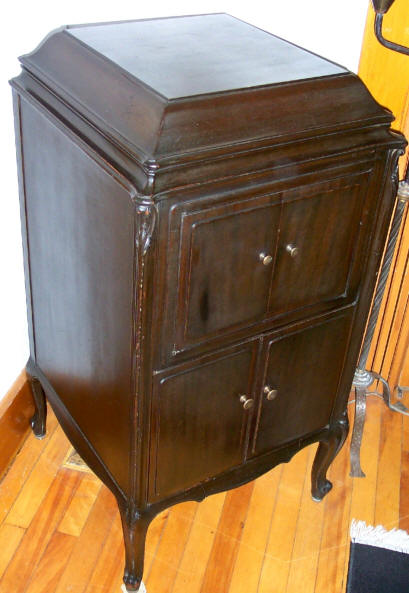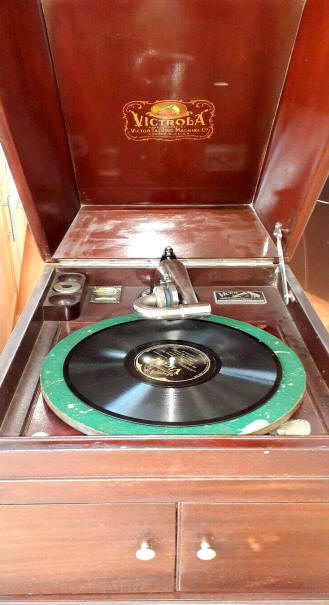
The Victor-Victrola Page
 Mahogany
Finishes
Mahogany
Finishes
Mahogany is by far the most common of all finishes on Victrolas (about 80% of total production), and this veneer is readily identified by a fairly linear (straight) and parallel grain pattern. The dark portions of the grain will typically vary in width along the parallel lines. Most early Victrolas were produced in Red Mahogany, which was available in light or dark shades. In 1913, Victor introduced English Brown Mahogany, which quickly became very popular, and became the dominant finish by the early 1920's; by that time, Red Mahogany had lost its popularity. By the mid-1920's the only available mahogany finish was in a blended, brown shade.
Note that mahogany finishes tend to darken considerably when exposed to heat/cold (e.g. stored in an attic or basement) and the originally glossy surfaces can become rough and "crazed" (see explanation at the bottom of this page).
Collectibility: Since Mahogany was the most common finish for Victrolas, most collectors prefer machines in walnut or oak. However, rare or exceptionally nice Mahogany Victrolas can still be considered highly collectible.
Scroll down to view all mahogany finish choices.
LIGHT RED MAHOGANY (below)
Light Red Mahogany was a common choice for early Victrolas, and remained popular up through the 'teens. When new, this finish had a very strong red hue with a high-gloss varnish surface coat.
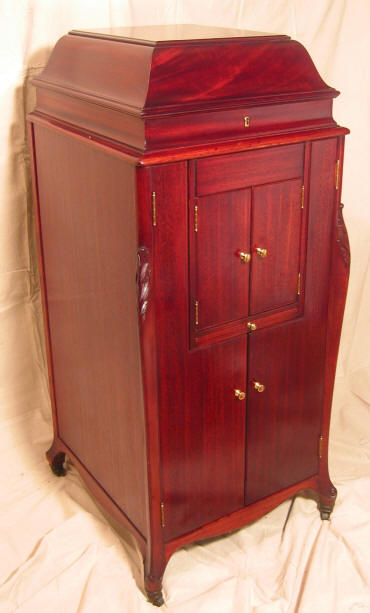
DARK RED MAHOGANY (below)
Dark Red Mahogany was also offered when the Victrola was first introduced. It gained in popularity through the 'teens and became the dominant choice for most Victrolas by 1920. When new, this finish had a reddish-brown color with a high-gloss varnish surface coat. There can be a considerable degree of overlap in shading between "light" and "dark" mahogany finishes, and in some cases, it may be hard to determine which type it is.
ENGLISH BROWN MAHOGANY (below)
English Brown Mahogany was introduced in 1913, and quickly became a very popular choice. It is often mistaken for Walnut due to the dark brown color, but the parallel, linear grain figuring is a dead-giveaway that this is Mahogany.
MAHOGANY VARIATIONS (below)
Some Victrolas used diagonally-cut mahogany veneer sections to create an artistic effect.
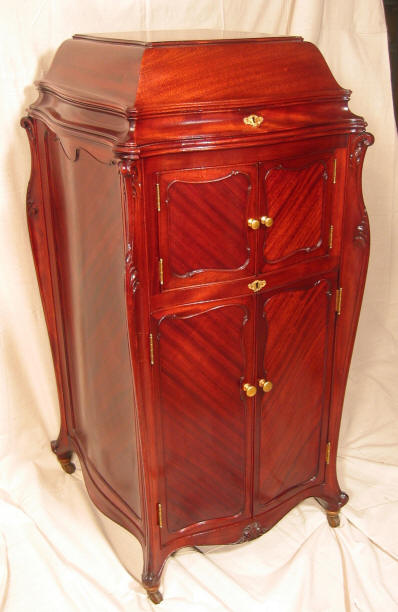
BLENDED FINISH MAHOGANY (below)
After 1925, most Victrolas used a "blended" mahogany finish, with a light center which darkens towards the edges of the cabinet. Colors tended toward a brownish-red. A semi-gloss lacquer top-coat was used.
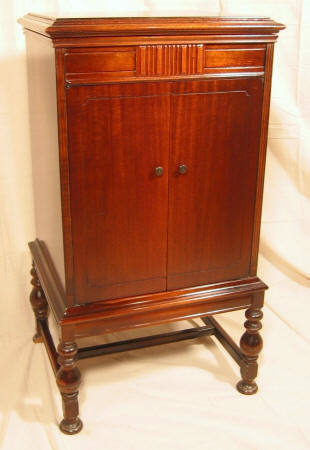
EFFECTS OF EXPOSURE, AGE AND WEAR
Mahogany finishes tend to become dark and "alligatored" with age, especially after extended exposure to heat and cold. The color can become almost black, and the surface rough to the touch (left). At right is a Light Red Mahogany finish showing typical exposure deterioration. Notice how the area under the lid is much brighter and glossier than the front doors. When new, the entire cabinet had the same color and gloss as the under-lid area. Mahogany veneers did not tend to age as well as oak or walnut.
